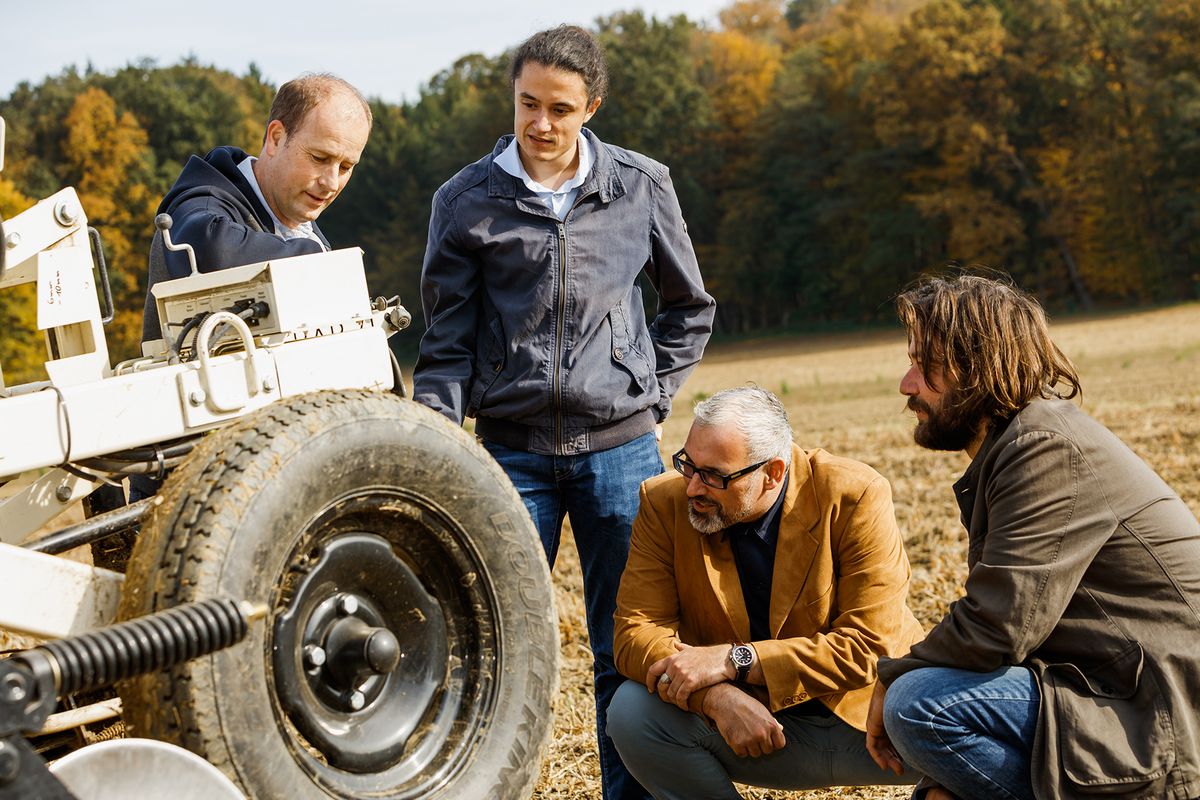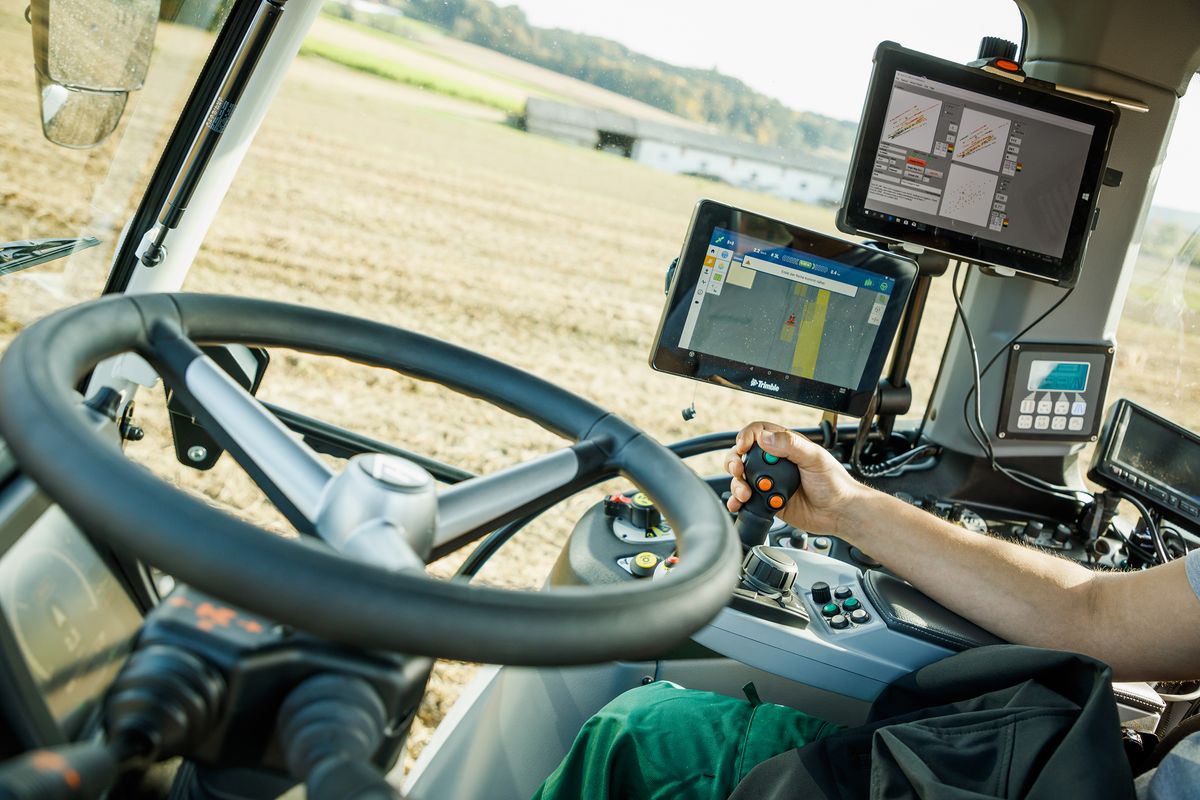Statistics Meets Digital Agriculture

From left: Hermann Katz and DI Philipp Wedenig (of JOANNEUM RESEARCH POLICIES), Holger Pirchegger (Maschinenring Steiermark), Georg Brunnhofer (aGRAR-ZT). Credit: Maschinenring/Linshalm
With the help of modern farming methods, field yields are to be optimised. JOANNEUM RESEARCH, together with the Styrian machinery association Maschinenring Steiermark, analysed the soil properties of agricultural fields and statistically processed the data obtained in such a way that optimised sowing, fertilisation or irrigation can be carried out with pinpoint accuracy. This saves costs and increases the yield.
One way of meeting the population's growing food requirements is to optimise field yields using the latest farming methods. This can be achieved, for example, through exact and efficient fertilisation and through precise knowledge of the soil properties. Different types of soil can occur even within a single field.
In order to be able to characterise the soil in detail, a research project identified homogeneous field sections, so-called clusters, which serve as a basis for taking additional soil samples in a targeted manner. The samples from the individual sections can also be used for statistical modelling of fertilisation and yield. This approach will make it possible to answer relevant questions about the most productive field zones, the optimum composition of fertilisers or necessary irrigation in the future.
Cluster for high-yielding harvests
Hermann Katz, research group leader at POLICIES, the Institute for Economic and Innovation Research, explains how this works: "We get georeferenced soil sensor data from several fields. In addition to geographical parameters, these data provide information on soil conductivity, soil redness, soil temperature, measuring depth, soil pH and slope inclination. These data are evaluated and linked with each other."
To achieve the best possible quality of the data, they were discretised on grid cells. Prior to this, it was necessary to determine the smallest meaningful statistical unit and to select a suitable aggregation unit, such as the mean value.
"We defined cells measuring six by six metres as the smallest sensible statistical unit and determined the mean value as a usable unit", explains Katz. The knowledge gained through clusters provides farmers with a sound basis for making decisions on how to manage their fields. Optimum fertilisation and irrigation, depending on the soil conditions, result in high-yielding harvests.

